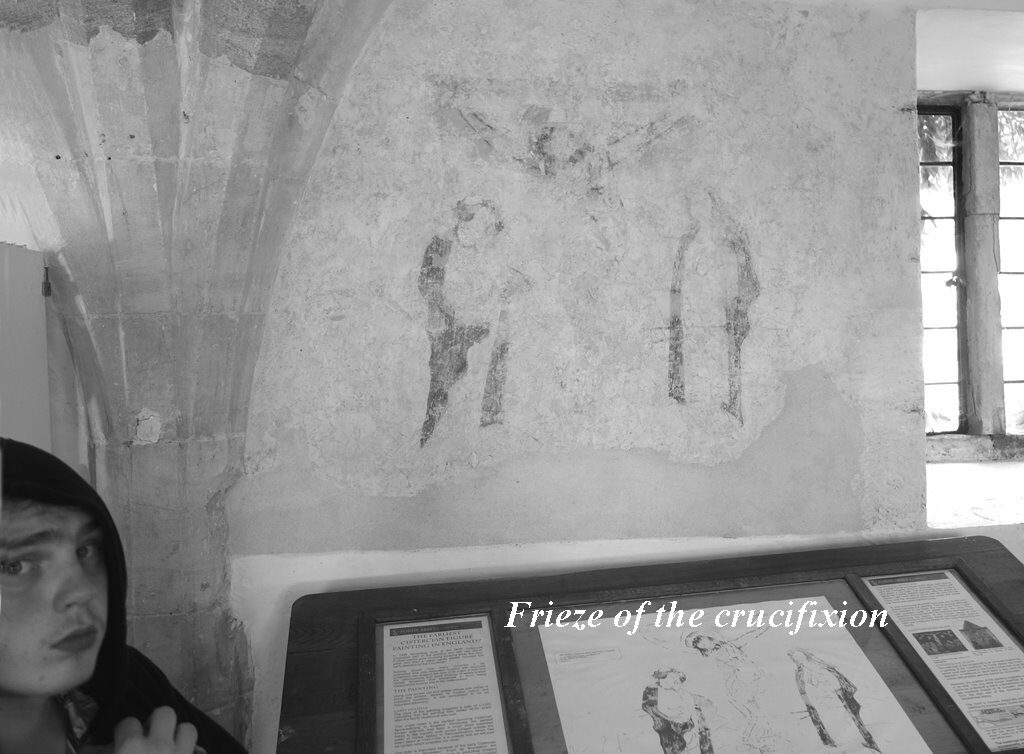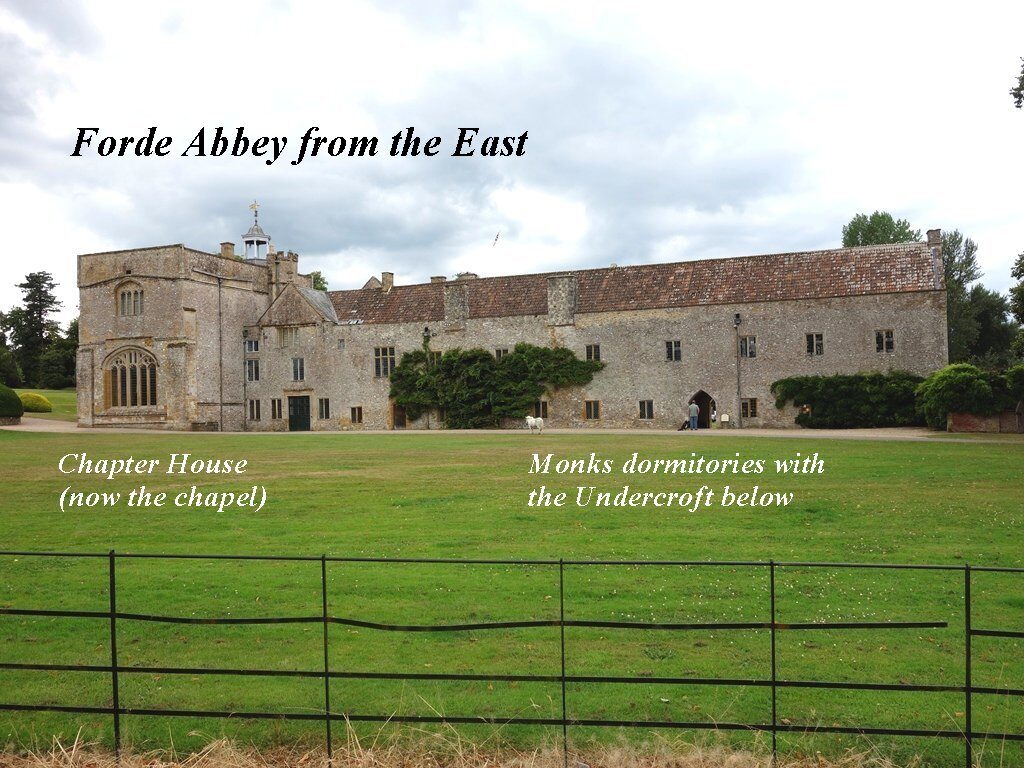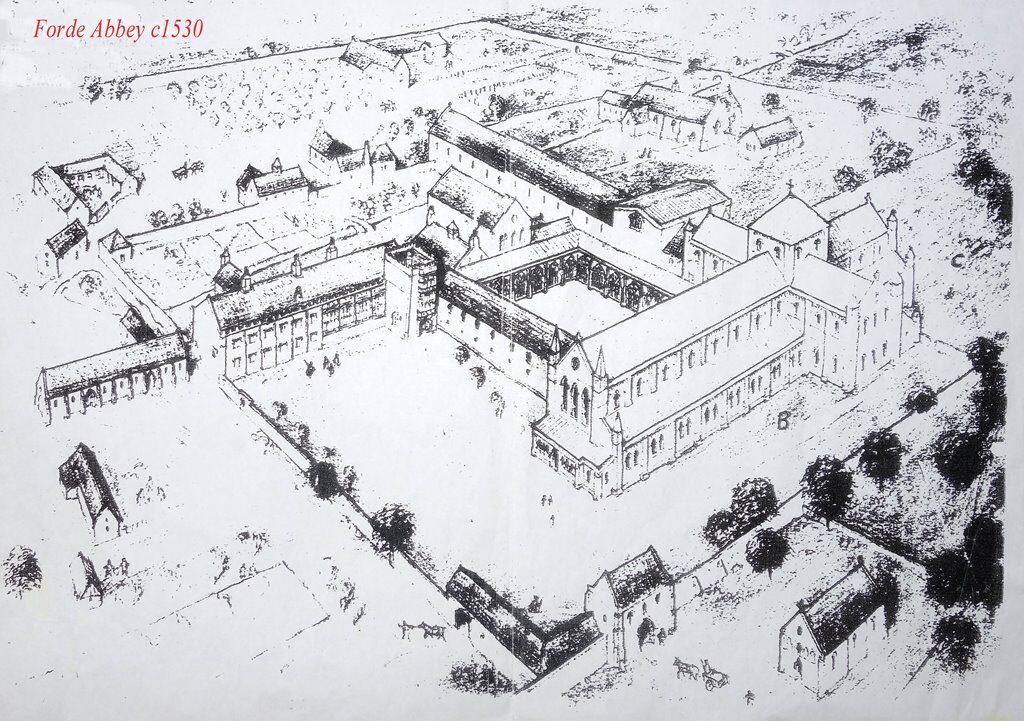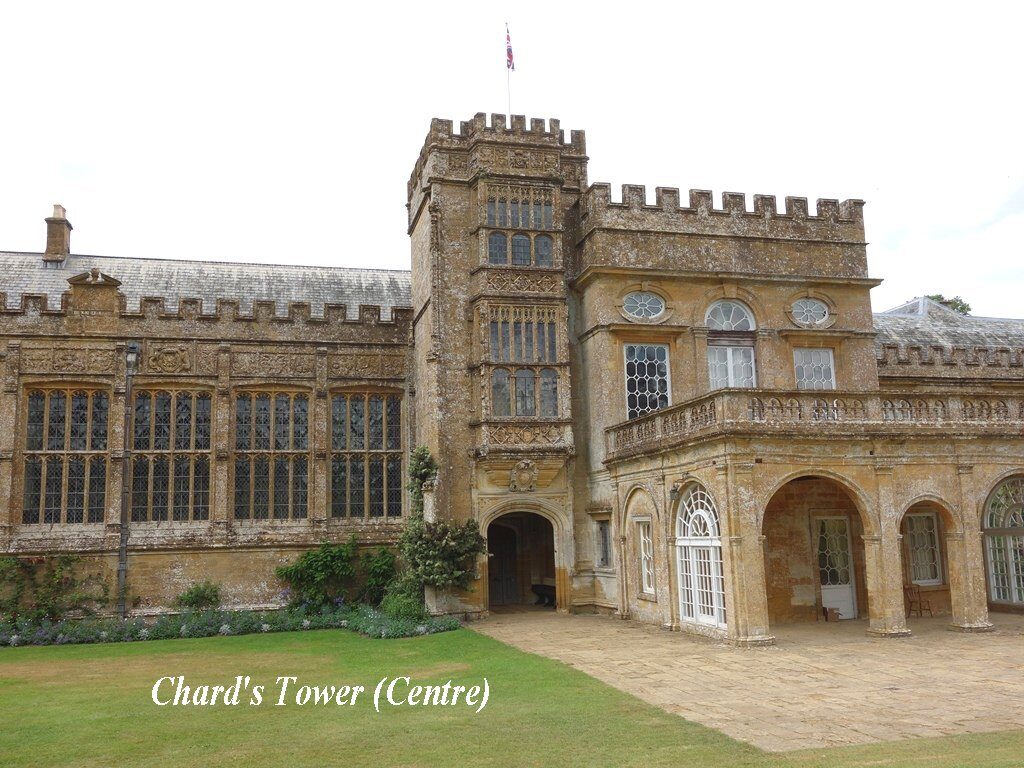by Peter Porteous
A hooded boy stands in front of the Cistercian wall painting of the crucifixion in the North Undercroft. We were sheltering from the humidity and fierce July sun during the Forde Abbey Summer Fair in what may have been a chapel for the novice monks built more than 700 years ago.

The frieze was discovered in 1990 during renovations and is thought to be the earliest Cistercian figure painting in England. It is on the East wall of the Eeles’ pottery shop, in buildings that have been radically altered since the Reformation and the visitor must look hard and use imagination to understand the history and the original layout of the old Abbey.
If the Cistercian monks and lay brothers returned today, they may still recognise their quarters, their kitchen, refectories and their chapter house but their abbey church and many other buildings are gone with the stone reused to build the English Baroque architecture of the main house.

Today, those monks might have been amused to see people of the 21st century watching the ferret racing, the falconry displays and their participation in archery and fly casting (all leather and prunella), but no doubt would be bewildered by the display of classic cars and people’s mobile phones!
It was by happy chance in 1141 that a small group of dispossessed monks on foot and carrying a lofty cross were spied making their way over the ford on the old Roman Road by Adelicia de Brionne. Adelicia lived at nearby West Ford (near South Chard) and was none other than their former patron’s sister and heir. She offered the monks land by the River Axe on which to build a monastery which, after much prayer and fasting they dedicated to the Blessed Virgin Mary. Adelicia’s descendants were the Courtenays, Earls of Devon whose bones still moulder in the earth about the house and were the abbey’s munificent benefactors.

Forde Abbey flourished as a monastery for four hundred years during which time it became one of the richest and most learned institutions of its kind in England. By the end of the 13th century, around 30,000 acres were owned by the abbey. During its 400 years, Forde had 32 abbots, some achieving greatness like Bishop Baldwin who became Archbishop of Canterbury and who is thought to have accompanied Richard the Lionheart to the Holy Lands.
The last abbot was Thomas Chard, born near Awliscombe in 1470 and educated at Oxford. Though a man of influence under the Bishop of Exeter, he resigned his various duties to become a monk at Forde Abbey and was then elected Abbot the following year. Abbot Chard devoted himself to a comprehensive overhaul of the abbey and much is owed to him for how it appears today, in particular, the Great Hall and Chard’s Tower.
But the times were troubling and would have kept Abbot Chard in a constant state of alarm with the unscrupulous character of Henry VIII. The Reformation in England was driven by the rise of the new English middle class with its disaffection with Church authority but the catalyst for upheaval was the Henry’s petulance with Pope Clement over his marriage difficulties. His attack on the Church led to the theft and redistribution of its wealth. In 1536, the first Act for the dissolution of the monasteries was passed and within two years, over 3000 religious’ buildings, colleges and hospitals were annexed to the Crown.

To win over the population amidst this destruction, the people were promised to be relieved of their taxes and that there would be raised and maintained new earls, barons and knights for the better provision of the poor with new preachers to proclaim the new religion. Needless to say, these promises were wholly unfulfilled and led to great mischief and extreme poverty, particularly in Devon, not seen before. There was great increase in domestic hardship by the oppression of poor tenants at the hands of new landlords who were as harsh and exacting as the monks had been kind and generous. The Reformation brought with it, widespread poverty and wretchedness.
On the destruction of ‘the old religion’ and dissolution of the monasteries, John Bale said at the time: “…that neither the Britons under the Romans and Saxons nor yet the English people under the Danes and Normans, had ever such damage of their learned monuments as we have seen in our time. Our posterity may well curse this wicked fact of our age, this unreasonable spoil of England’s most noble antiquities”.
It was also said Abbot Chard had “built himself a dwelling on a scale to justify the reformation and dissolution”. He succumbed to fate and surrendered Forde to the Crown in 1537. For the next 100 years the Abbey had various owners who dismantled the Abbey church. In 1649 it passed to Edmund Prideaux, Esq., but that’s another story!